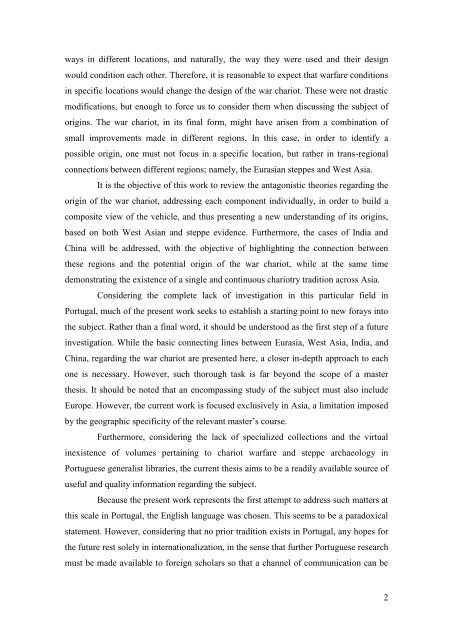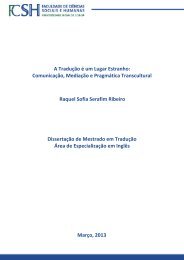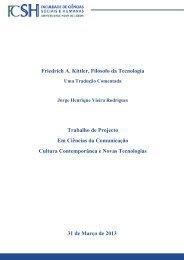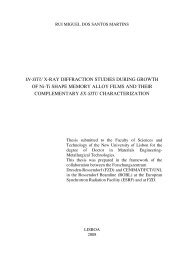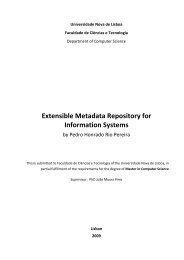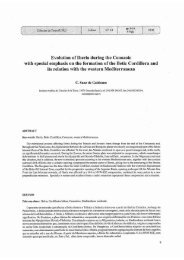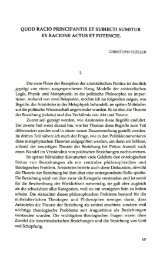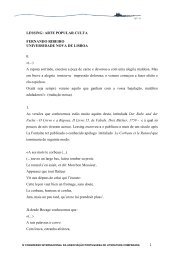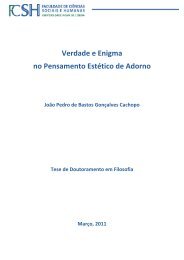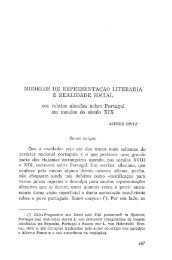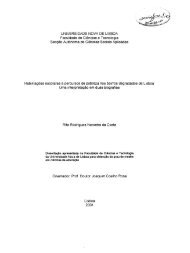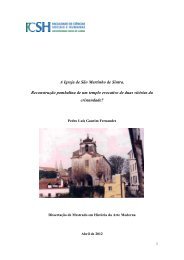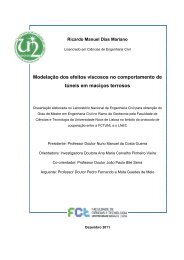Elias Manuel Morgado Pinheiro Dissertação de Mestrado em ...
Elias Manuel Morgado Pinheiro Dissertação de Mestrado em ...
Elias Manuel Morgado Pinheiro Dissertação de Mestrado em ...
You also want an ePaper? Increase the reach of your titles
YUMPU automatically turns print PDFs into web optimized ePapers that Google loves.
ways in different locations, and naturally, the way they were used and their <strong>de</strong>sign<br />
would condition each other. Therefore, it is reasonable to expect that warfare conditions<br />
in specific locations would change the <strong>de</strong>sign of the war chariot. These were not drastic<br />
modifications, but enough to force us to consi<strong>de</strong>r th<strong>em</strong> when discussing the subject of<br />
origins. The war chariot, in its final form, might have arisen from a combination of<br />
small improv<strong>em</strong>ents ma<strong>de</strong> in different regions. In this case, in or<strong>de</strong>r to i<strong>de</strong>ntify a<br />
possible origin, one must not focus in a specific location, but rather in trans-regional<br />
connections between different regions; namely, the Eurasian steppes and West Asia.<br />
It is the objective of this work to review the antagonistic theories regarding the<br />
origin of the war chariot, addressing each component individually, in or<strong>de</strong>r to build a<br />
composite view of the vehicle, and thus presenting a new un<strong>de</strong>rstanding of its origins,<br />
based on both West Asian and steppe evi<strong>de</strong>nce. Furthermore, the cases of India and<br />
China will be addressed, with the objective of highlighting the connection between<br />
these regions and the potential origin of the war chariot, while at the same time<br />
<strong>de</strong>monstrating the existence of a single and continuous chariotry tradition across Asia.<br />
Consi<strong>de</strong>ring the complete lack of investigation in this particular field in<br />
Portugal, much of the present work seeks to establish a starting point to new forays into<br />
the subject. Rather than a final word, it should be un<strong>de</strong>rstood as the first step of a future<br />
investigation. While the basic connecting lines between Eurasia, West Asia, India, and<br />
China, regarding the war chariot are presented here, a closer in-<strong>de</strong>pth approach to each<br />
one is necessary. However, such thorough task is far beyond the scope of a master<br />
thesis. It should be noted that an encompassing study of the subject must also inclu<strong>de</strong><br />
Europe. However, the current work is focused exclusively in Asia, a limitation imposed<br />
by the geographic specificity of the relevant master‟s course.<br />
Furthermore, consi<strong>de</strong>ring the lack of specialized collections and the virtual<br />
inexistence of volumes pertaining to chariot warfare and steppe archaeology in<br />
Portuguese generalist libraries, the current thesis aims to be a readily available source of<br />
useful and quality information regarding the subject.<br />
Because the present work represents the first att<strong>em</strong>pt to address such matters at<br />
this scale in Portugal, the English language was chosen. This se<strong>em</strong>s to be a paradoxical<br />
stat<strong>em</strong>ent. However, consi<strong>de</strong>ring that no prior tradition exists in Portugal, any hopes for<br />
the future rest solely in internationalization, in the sense that further Portuguese research<br />
must be ma<strong>de</strong> available to foreign scholars so that a channel of communication can be<br />
2


